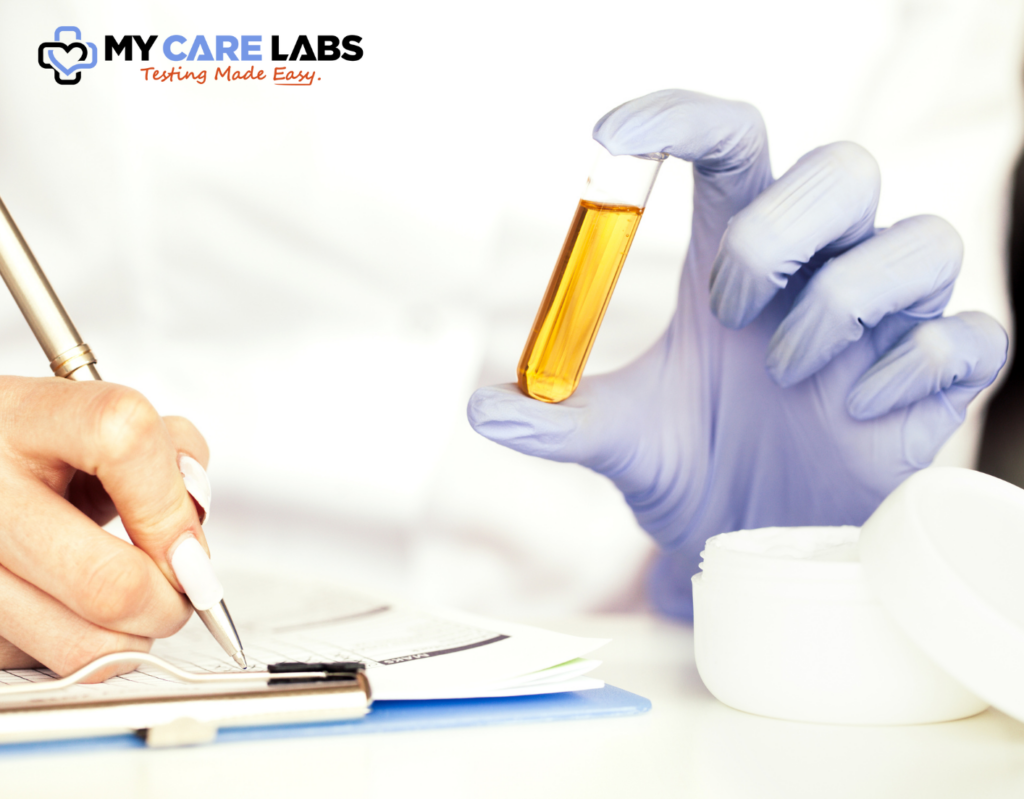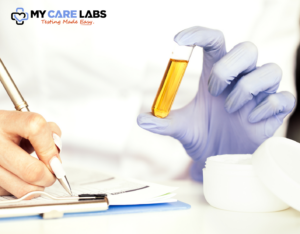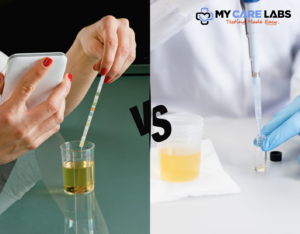Urinalysis is one of the most common, yet essential tests which helps analyze the characteristics and urine infections. Thus, the aims of such tests can be met by analyzing urine, which helps establish basic metabolism and kidney function, identify proteins, glucose, and ketones, and examine the urine sample’s appearance, density, and content.
Three main components of Urinalysis
The process of urinalysis is completed in three steps:
1. Visual Examination: The tint must be observed after the urine and the degree of clarity of the urine sample excreted by the body.
2. Chemical Examination: Test such as the test strips to confirm the presence of Glucose, proteins, and blood on the nurse’s hand.
3. Microscopic Examination: The elaboration on how samples are identified with the help of a microscope about cells, crystals, bacteria, and other particles.
Culture Testing for Yeast Infections
Thus, while urinalysis could paint an overall picture of the person’s urinary status, urine culture testing is used to diagnose bacterial and fungal infections including yeast. Here is how these tests work: These are how these tests work:
1. Urinalysis:
Visual Examination: If one wakes up and notices their urine is colored or contains a haze, it is clear to them that they have an infection.
– Chemical Examination: Summing up, substances such as leukocytes (white blood cells), and nitrites are likely to be high due to infection only and the test strips can highlight this fact.
– Microscopic Examination: Microorganism sediments in urine samples can also be seen under the lens of the microscope thus, such a sample can be used for yeast infection diagnosis.
2. Urine Culture:
– Culture Growth: A portion of the urine sample is placed on a nutrient agar so that it serves as a nutrient base for the bacteria or fungus. Accordingly, if the yeast cells increase in number, the doctor will be diagnosing one a yeast infection.
– Identification: The yeast also can be serotyped; this lets the practitioner know the right antifungal agent to use in a case of infection.
Symptoms of Yeast Infections
These are broad-spectrum fungal infections and Genital Candidiasis is an example of the kind of infection that affects the urinary system. Symptoms of a urinary yeast infection can include Some of the symptoms that requires the help of a doctor due to a urinary yeast infection are:
– Frequent Urination: Hmm, being the feeling of an urgent and frequent need to urinate but when it is passed the amount of urine is little.
– Painful Urination: A baby, now coming more frequently with a bowel movement and/or having the feeling that burning sensations accompany a urine stream.
– Cloudy or Discolored Urine: The evidence includes Blood or pus in the urine; often a person can get their urine red if they take more than the recommended amount of Vitamin C.
– Pelvic Pain: The discomfort that is localized in the lower abdomen with suggestions of cramping or stabbing in the pelvis area.
– Unpleasant Odor: When it is pale but strong, unusual smell to the urine.
Yeast is an integral part of everyone’s life but sometimes it is an outlaw and when it comes in juxtaposition with skin or tissue that is wet and has a cover it reproduces and results in infection. Yeast is part of the body, and while most women can manage it, others get issues at times, due to stress, antibiotics, among others, or even pregnancy, here is how to handle yeast infections.
How to cure Yeast infection?
Managing yeast infections involves both treatment and prevention strategies: Yeast infections can be cured, and this depends on the technique that must be used and the stage where the condition is located.
1. Medication:
– Antifungal Medications: There are topical antifungal drugs that you can use in treating yeast infection, these may be over-the-counter drugs or prescription ones. These can be a small tablet, some ointment, or a suppository.
– Follow Medical Advice: Regarding the medications, there is stress on adherence to the doctor’s advice, where it is stated that the medications should be taken whether the conditions have improved as prescribed.
2. Lifestyle Changes:
– Good Hygiene: Sometimes wash all your personal belongings and your clothes for the sake of cleaning the body so that you do not contract a specific disease.
– Clothing Choices: Loose and light clothing should be worn because the genital region should not be a hot/ sweaty area, no nylon/ any synthetic underwear should be worn.
– Dietary Adjustments: This means that sugar should be avoided, or its intake reduced, and one should take foods rich in probiotics to bring within the body more beneficial bacteria thereby reducing the instance of yeast.
3. Regular Monitoring:
– Follow-Up Testing: If one has a recurrent UTI (Urinary Tract Infections), then, urine analysis and culture test should be conducted often so that one can notice when the infections are recurring.
How My Care Labs Can Help
My Care Labs offers comprehensive services to help you detect and manage yeast infections effectively: If you wish to detect and treat your yeast infection properly, My Care Labs is ready to provide all the necessary care to you.
1. Accurate Testing:
– Urinalysis: Inform you precisely the condition of the urine to indicate bacterial growth.
– Urine Culture: Prepares the ground for the confirmation of yeast and much more to identify the type of yeast that is in question.
2. Convenient Services:
– At-Home Collection Kits: At the comfort of your home, you can generate samples.
– Local Partner Labs: It was noted that self-sampling should be conducted where there are no embarrassing public areas.
3. Fast Results:
– Quick Turnaround: Develop the program to get quick and accurate test results to minimize the liability of inaccurate assessment and early treatment probability.
4. Expert Guidance:
– Interpretation and Recommendations: Any communication that is done concerning your health should involve all the reports and Recommendations be clear and communicated in a language that can easily be understood by nonexperts.
– Healthcare Connections: Assist in consulting with other practitioners of the branch of health care for further intervention or other processes when necessary.
Conclusion
Therefore, urinalysis and urine culture testing are used as effective diagnostic tools in the yeast infection screening and treatment processes. These tests are significant as they provide clear and elaborate information on a patient’s urinary health thereby ensuring proper diagnosis and treatment. My Care Labs introduces the rationality, sophistication, and assistance that you need in the management of your health condition and its requirements in the simplest, quickest, easiest, and most convenient way.
For more information about urinalysis, and how My Care Labs can help, please, check our website or contact our team.
Email: [email protected]
Phone: +1-800-790-4550
Address: 5500 Stewart Avenue, Suite 108, Fremont CA 94538






